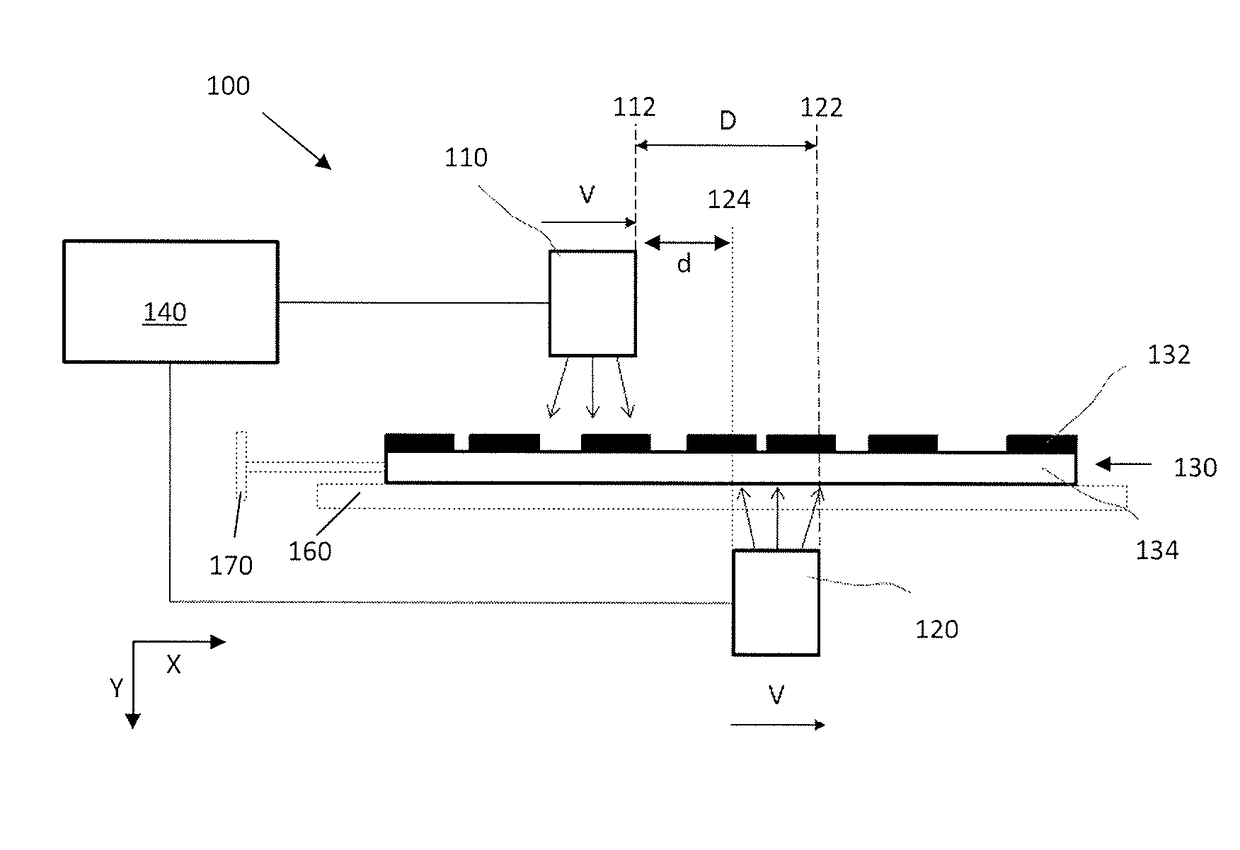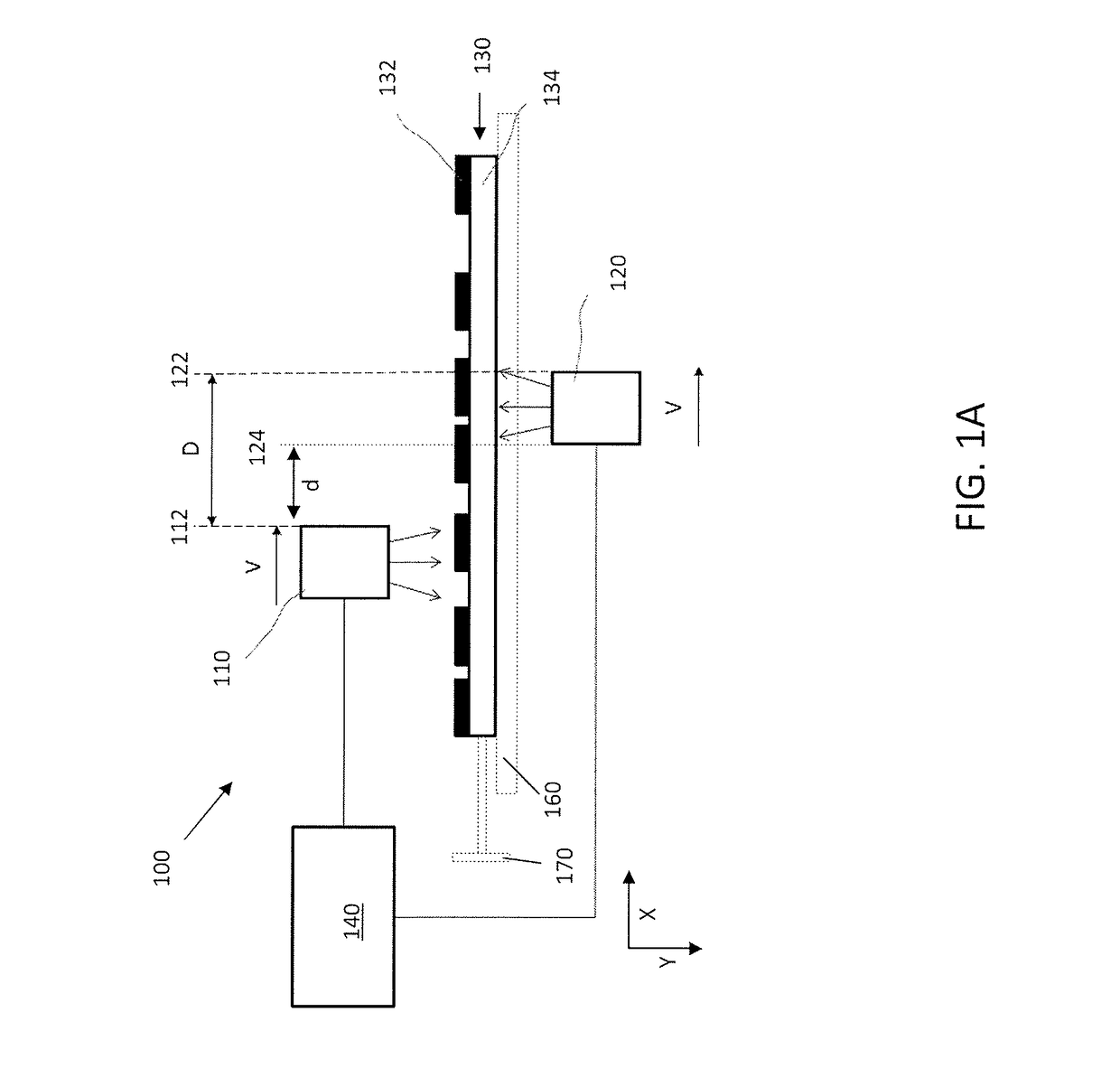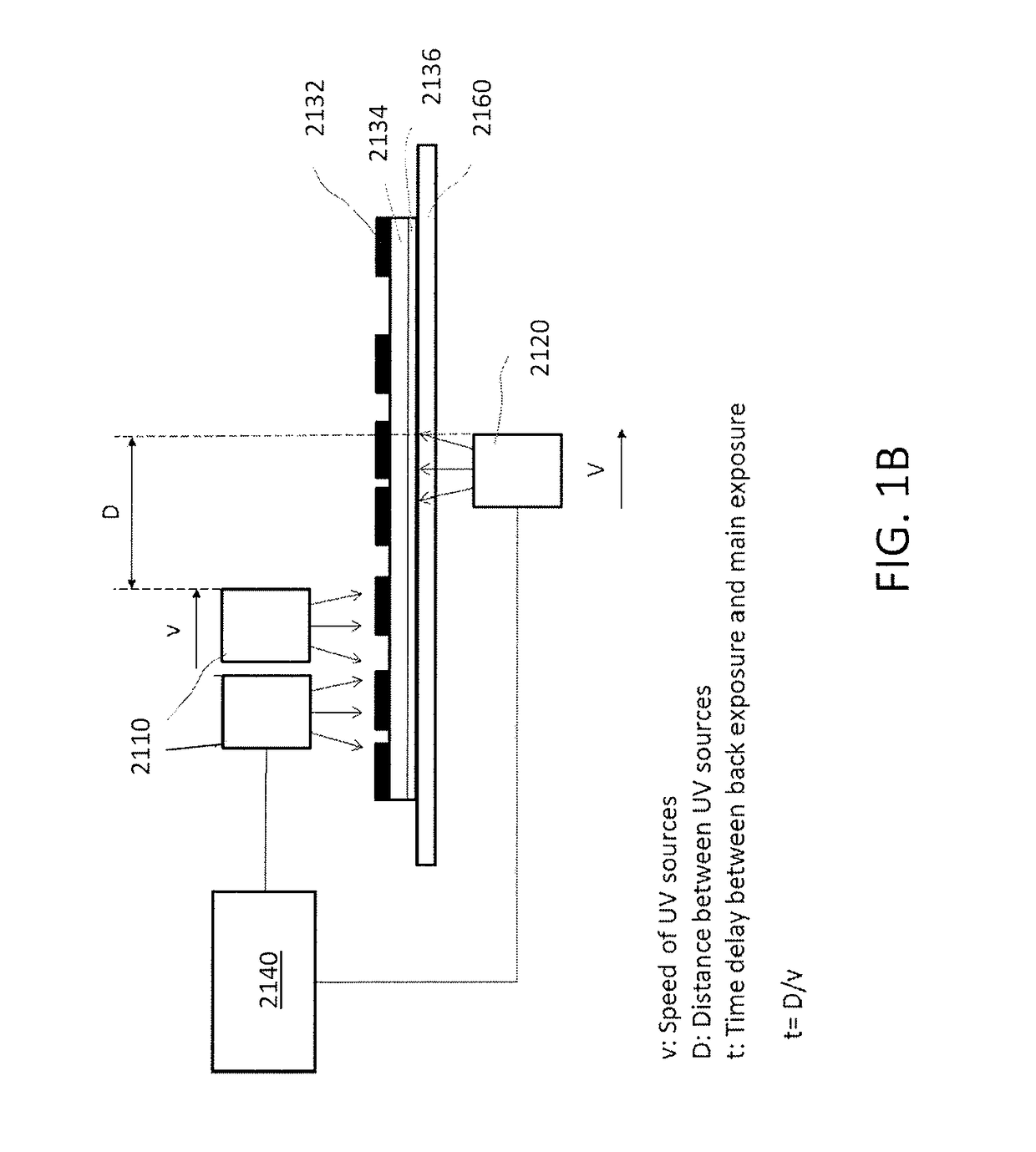Process and apparatus for controlled exposure of flexographic printing plates and adjusting the floor thereof
a technology of flexographic printing and controlled exposure, which is applied in the direction of electrical equipment, printed circuit manufacture, instruments, etc., can solve the problems of unsatisfactory variability in plate quality, more susceptible to damage during use, and still not optimal, so as to reduce the delay time and improve the stability of the dots
- Summary
- Abstract
- Description
- Claims
- Application Information
AI Technical Summary
Benefits of technology
Problems solved by technology
Method used
Image
Examples
example
[0043]For optimization of the time delay, single element structures of various sizes were imaged by a laser into the mask of a photosensitive printing plate at a resolution of 4000 dpi. For this example, a Model No. DPR 045 printing plate, manufactured by DuPont, was used.
[0044]The photosensitive printing plates were then back exposed, such as by using UV radiation source 120, and main exposed, such as by using UV radiation source 110, as depicted in FIG. 1. For this example, each source 120 and 110 source comprised a linear source comprising a bank of individual LED UV point sources, as described in more detail herein. The plate was exposed in a single exposure step using a main side UV irradiance of 230 mw / cm2 at a wavelength of 360 nm and a back side UV irradiance of 17 mw / cm2 at the same wavelength at a relative plate speed of 1.25 mm / sec. For this example, the UV radiation sources were moved lengthwise under and above the surface of each photosensitive printing plate at the spe...
PUM
| Property | Measurement | Unit |
|---|---|---|
| speed | aaaaa | aaaaa |
| wavelength | aaaaa | aaaaa |
| diameter | aaaaa | aaaaa |
Abstract
Description
Claims
Application Information
 Login to View More
Login to View More - R&D
- Intellectual Property
- Life Sciences
- Materials
- Tech Scout
- Unparalleled Data Quality
- Higher Quality Content
- 60% Fewer Hallucinations
Browse by: Latest US Patents, China's latest patents, Technical Efficacy Thesaurus, Application Domain, Technology Topic, Popular Technical Reports.
© 2025 PatSnap. All rights reserved.Legal|Privacy policy|Modern Slavery Act Transparency Statement|Sitemap|About US| Contact US: help@patsnap.com



